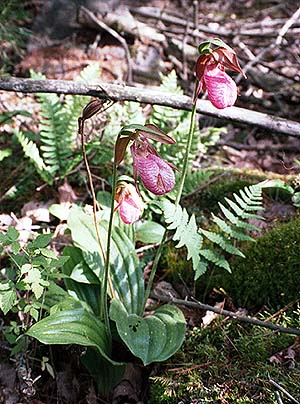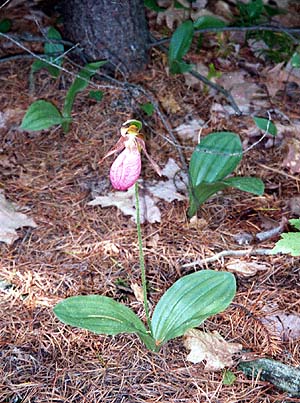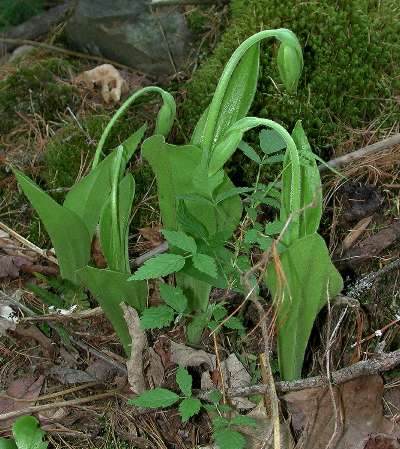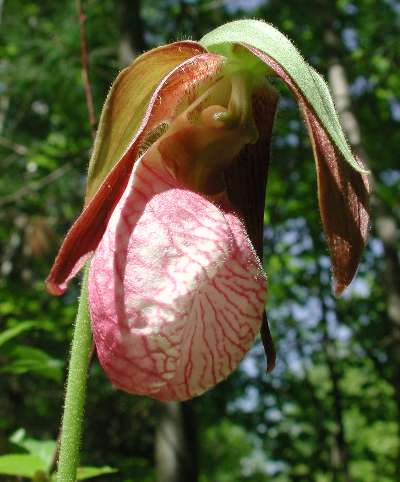The plants are quite widely dispersed amongst white and jack pines; mostly in groups of 1-4 plants within 20-30 feet of each other. There are three main areas, all in thick moss in fairly sandy soil and in spots where they get a bit of full sun at different times of the day.
The underlying soil is very sandy but, like much of the local pine forests, covered with moss and pine needles. The area was logged of much of the pine in the mid-80s before we bought the property and deciduous trees are starting to take over - mostly oaks, ironwood and maple. However, the ladyslippers are most common in the areas where there are still pine trees.
The above 2 images were taken with our digital camera. The bloom on the right shows the “puckered” appearance of the slipper which apparently differentiates this variety from the Cyp. regina we initially thought we had. We’ll keep an eye on the blooms to see how long they last but as can be seen from the dates of last year’s images, they appear to last for several weeks. Some of our friends in the area have yellow ladyslippers. We tried to grow a couple of plants several years ago but they were unsuccessful. We were told they came from a location that was fairly moist and quite shaded. However, they didn't survive the transplant to near a small creek in our "wildflower" area. More information about orchids
For really exotic local plants, we sometimes hike over to a fairly rare example of a true bog at a friend's place about 10km from our house. Jack-in-the-pulpit, pitcher plants, sphagnum moss... it is a tiny north-facing area protected by winds in a depression in the hills. Quite a treat to take off one's shoes and "squelch" through! Last updated on 06 December 2001 . |




